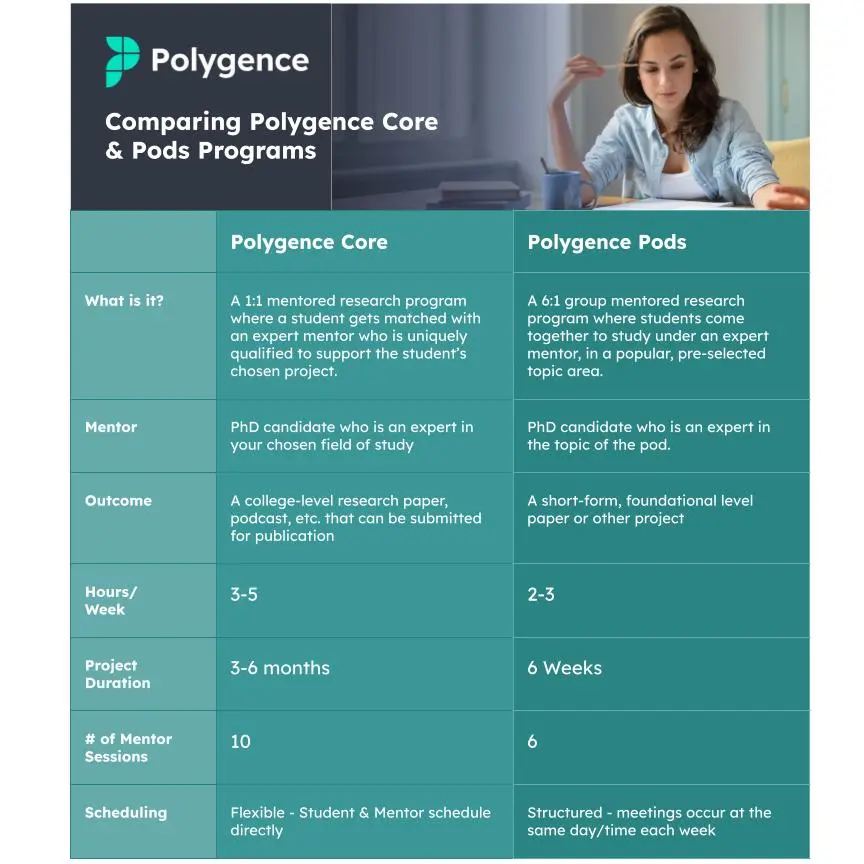12 Architecture Passion Project Ideas for Students
7 minute read
Have you ever marveled at the way sunlight dances through a carefully placed window, or how the acoustics of a concert hall can transport an audience? Perhaps you've wondered about the intricate balance of form and function in iconic buildings like the Guggenheim or the Sydney Opera House. If you’ve answered yes to any of these questions, then you’re probably interested in architecture.
Architecture is not just about buildings; it's about crafting experiences, solving complex spatial puzzles, and leaving a lasting impact on the world around us. This fascinating field intersects with civil engineering, interior design, and environmental sustainability, making it rich with possibilities for exploration.
Perhaps you already have an innate interest in architecture, or maybe you’re interested in one of the adjacent fields mentioned above. Regardless, a research-focused passion project can be a great way for students to demonstrate their creativity and think critically.
Architecture passion projects for middle and high schoolers can take various forms, from hand-drawn sketches and digital renderings to physical models and even small-scale prototypes. Working on such projects can allow you to explore potential career paths in architecture, interior design, urban planning, or related fields, and understand what the work is like. Additionally, these passion projects provide an opportunity for you to potentially collaborate with peers or seek guidance/feedback from mentors in the architecture and design community.
What are architecture projects so rewarding?
What makes an architecture passion project so meaningful is that it provides hands-on experiences outside of the classroom. In school classes, you may hear about architecture and its impact, but unless you attend an architecture school there’s very limited opportunity to actually create something in school. Passion projects give you valuable experience to create something on your own, where you have the freedom to explore your architectural interests and preferred design styles. This can serve as a great complement to the theoretical learning that you do in school.
If you’re interested in studying architecture in college, you may want to explore related fields during your high school career as well. For example, you may want to consider entering one of these 10 Engineering Competitions for High School Students. Or look into various Environmental Studies Research Opportunities for High School Students.
How can I find the best architecture project for me?
The architectural landscape is very vast so it might seem intimidating to approach an architecture passion project at first, especially if you’re new to the topic. As a result, it’s important to first consider what you’re personally interested in and your design preferences before diving into any one project.
It can be useful to first gain an understanding of the different types of architecture, and then narrow down to a few that stand out to you. For example, you could Google a type of architecture like “healthcare architecture," explore various examples, and read about the unique nature of the architecture type and why it matters.
What are some steps to bring my project to fruition?
It may feel overwhelming to take an architectural idea and turn it into a digital rendering or even a small-scale prototype. Here are some steps to take to get you on the right path.
Concept Development: Start by fleshing out your idea. Define the purpose, function, and goals of the project. Consider the site location, user needs, and any specific design requirements.
Research and Analysis: Research similar projects, relevant building codes and regulations, and environmental factors. Start to analyze the site's topography, climate, and surroundings.
Sketching: Begin sketching rough concepts to explore different design possibilities. Let your creativity flow and just see where it takes you!
Preliminary Design: Develop the most promising ideas further, creating more detailed sketches or digital representations. Consider the spatial layout, building massing, and potential materials you would use for the project.
Design Development: Refine your chosen concept by adding more detail. Create floor plans, elevations, sections, and 3D models to visualize the project better.
Budget and Cost Estimation: Develop a rough budget for the project by estimating the costs of materials, labor, and other expenses. This will help you determine if the project is financially viable.
Sustainability and Energy Efficiency: Try to integrate sustainable design principles and energy-efficient features into your plan. Consider factors like natural ventilation, daylighting, and renewable energy sources.
While all the above steps are crucial, don’t forget the importance of finding mentors or peers to help guide you and give you feedback during this planning phase. Joining a Polygence Pod is a great way to gain confidence, inspiration, and motivation alongside your peers while working closely with an industry expert.
Remember, mentors can help inspire you, suggest adjustments to your plans, or just provide support if you’re feeling stuck!
What are some ideas for a project to get started?
Looking for inspiration about what your architecture project focus should be? Here’s a list of possible research topic areas to consider:
1. Slum Redevelopment
Slums are becoming a rising problem as cities become more and more overcrowded. How can they be designed for better sanitation and well-being?
2. Hospital Architecture
Hospital architecture needs to be especially friendly to workers since they are working very long hours there. Different temperature and plumbing considerations need to be made.
3. Redesigning Spaces Under Elevated Roads
There tends to be a lot of dead space underneath elevated roads. How can we put that space to better use and give it a purpose?
4. Urban Parks
Urban parks, like the ones in New York City, can act as great green spaces for cities and bring communities together.
5. Reusing abandoned buildings
After buildings become old and abandoned, there’s the opportunity to enhance them and design them for a different purpose instead of demolishing them. What are some modern use cases for old buildings?
6. Jails
To make jails a place of change and rehabilitation rather than a space for harm, architectural design can make an impact. Carefully think through how you would want to design a jail, and check out some contemporary examples for inspiration.
Uncover hidden passions with our mind-blowing discovery quiz
Answer 8 questions and we'll give you a 'freakishly accurate' profile on who you are, how to get the most out of your strengths, and even what majors you should explore
7. Courtrooms
This is a unique opportunity to take a building that is typically seen as something that people might fear, and turn it into something less intimidating while still serving its purpose of upholding the law.
8. Disaster - Resilient Structures
Natural disasters happen all over the world and can have a devastating impact on communities. How can we create structures that are more resistant to natural disasters like earthquakes or flooding? For this project, pick one specific natural disaster to focus on.
9. Nature-Inspired Architecture
See if you can incorporate visual elements from nature into your physical project. This project gives you a lot of room to get creative!
10. Train Stations, Bus Terminal, or Airport
Transportation hubs are typically very crowded and require careful designing of spaces. Brainstorm or research innovative ways to keep crowds from piling up and maintain the flow of travelers.
11. Sports Complex
If you’re excited about sports then this is a great project for you. When planning, consider the specific sport that you’re designing for and how the audience can best enjoy the game.
12. Museum
There are many different kinds of museums that you could design, so consider how the design of the museum may reflect the kinds of things that are displayed in the exhibitions.
How can I showcase my project?
After you’ve done all the hard work of planning, sketching, and visualizing your designs, we highly encourage you to think about your architecture project presentation. At Polygence, we believe that showcasing your work and research is extremely important. We’ve talked about how to showcase research on college applications, but showcasing research is not only for others; it's for you too! You deserve to present your project in the most compelling way possible.
There are many different ways you can choose to present your architecture passion project. You could choose to create a digital portfolio with images, renderings, or drawings showing your designs. You could also create a 3D virtual tour of your project using 3D modeling software or VR to create a more interactive experience. Presenting your project could even involve creating a physical model of your building and showing it to others.
Ultimately, each presentation method has its unique qualities, but something that should stay consistent throughout all these methods is the story behind your project. Show the audience the entire process—from your early ideas and sketches to later-stage details. Explain how you came up with ideas and what might have inspired you in the process. These storytelling details can really enhance a project!
Finally, don’t be afraid to share your project and story on various digital platforms or social media. This will allow you to reach a wider audience (if that’s something you want) and potentially connect you with other students who are interested in architecture.
Do your own research through Polygence!
Polygence pairs you with an expert mentor in your area of passion. Together, you work to create a high quality research project that is uniquely your own.
From Concept to Creation: Unleashing Your Architectural Passion with Polygence Pods
If you’re interested in pursuing an architecture research or passion project, Polygence Pods is a great place to start! Students enrolled in this program have the opportunity to learn from an industry expert with an advanced degree alongside five like-minded peers. Over the course of six weeks, students will explore a popular career or research topic together, such as designing an urban park, exploring hospital architecture, museums, and more!
The small group setting fosters teamwork and creative dialogue while promoting personal accountability. Polygence Pods don’t just teach teamwork, however. They also provide students with individualized guidance so that they can each complete their own unique research project! Overall, Polygence Pods offers a flexible, personalized learning environment, perfect for students to develop their passion projects with expert guidance.
For more information, check out some reviews and testimonials from parents and past scholars. Then take a look at our latest college admissions statistics!
Related Content
Get an Edge in College Admissions Through Doing a Research Project
How I Advocated for Students as an Admission Officer when they Wrote About Passion Projects
Think Research in High School is Daunting and Confusing? Think Again!

Do Your Own Research Through Polygence
Your passion can be your college admissions edge! Polygence provides high schoolers a personalized, flexible research experience proven to boost your admission odds. Get matched to a mentor now!"
